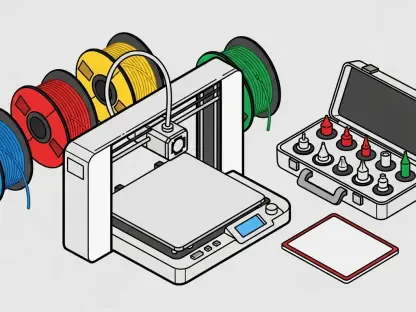Welcome to an insightful conversation on the latest cybersecurity challenges facing enterprise software systems. Today, we’re speaking with a renowned expert in the field who has dedicated years to understanding and mitigating vulnerabilities in platforms like Microsoft Exchange and SharePoint. With a deep background in vulnerability management and threat analysis, our guest brings a wealth of knowledge on how organizations can protect themselves from emerging cyber threats. In this interview, we’ll explore critical vulnerabilities recently highlighted by the Cybersecurity and Infrastructure Security Agency, dive into the specific risks they pose, and uncover actionable strategies for safeguarding systems against potential exploits.
Can you start by explaining what the Cybersecurity and Infrastructure Security Agency, or CISA, does and why their guidance on Microsoft vulnerabilities is so important for organizations?
Absolutely. CISA is a federal agency under the Department of Homeland Security, tasked with protecting critical infrastructure from cyber and physical threats. They play a pivotal role in cybersecurity by providing alerts, guidance, and resources to help organizations—both public and private—defend against digital risks. When it comes to Microsoft vulnerabilities, CISA’s insights are crucial because they often deal with widely used systems like Exchange and SharePoint, which are prime targets for attackers. Their guidance isn’t just about identifying problems; it’s about offering actionable steps to mitigate risks before they’re exploited, helping to safeguard everything from sensitive data to national security.
Let’s dive into a specific issue CISA recently flagged, the CVE-2025-53786 vulnerability in Microsoft Exchange Server. Can you break down what this vulnerability does to a system if it’s exploited?
Sure, CVE-2025-53786 is a high-severity issue that affects on-premise Microsoft Exchange Servers, particularly in hybrid configurations. If a cyber threat actor with administrative access exploits this, they can escalate their privileges, essentially gaining deeper control over the system. What’s really concerning is the potential impact on identity integrity in Exchange Online services. This means attackers could compromise user accounts or authentication mechanisms across both on-premise and cloud environments, potentially leading to a full domain compromise. It’s a serious risk because it bridges the gap between local and cloud systems, amplifying the damage an attacker can do.
Why do you think it’s so urgent for organizations to address this Exchange vulnerability, even if there’s no evidence of active exploitation yet?
The urgency comes down to the nature of the vulnerability and the stakes involved. Even if no exploitation has been observed, the fact that it can lead to a total domain compromise makes it a ticking time bomb. Cyber attackers often wait for the right moment or for vulnerabilities to become widely known before striking. By the time exploitation is detected, the damage could already be catastrophic—think stolen data, disrupted operations, or even ransomware. Proactive action is critical in cybersecurity; waiting for proof of exploitation is like locking the door after the thief is already inside. Organizations need to patch and reconfigure now to close the window of opportunity.
CISA has outlined specific steps to mitigate CVE-2025-53786. Can you walk us through the most important actions organizations should take to secure their Exchange systems?
Certainly. CISA and Microsoft have provided a clear roadmap to address this. First, organizations using hybrid Exchange setups should review Microsoft’s guidance on security changes for hybrid deployments to see if their systems are affected and eligible for updates. Then, installing the April 2025 Exchange Server Hotfix Updates is non-negotiable—it patches the core issue. Deploying a dedicated Exchange hybrid app is another key step; it helps isolate and secure the connection between on-premise and cloud environments. For those who’ve moved away from hybrid setups, Microsoft’s Service Principal Clean-Up Mode guidance is essential to reset credentials and remove lingering risks. Finally, running the Microsoft Exchange Health Checker tool ensures everything is configured correctly and flags any remaining issues. It’s a layered approach to lock down the system.
Another recommendation from CISA is to disconnect older, end-of-life versions of Exchange or SharePoint Server from the internet. Why is this such a critical measure for organizations to follow?
Older, end-of-life software like SharePoint Server 2013 or earlier Exchange versions no longer receive security updates or patches from Microsoft. That means any newly discovered vulnerabilities in these systems won’t be fixed, leaving them as open doors for attackers. When these systems are exposed to the internet, they become easy targets for scanning and exploitation by threat actors looking for low-hanging fruit. For instance, SharePoint Server 2013, which reached end-of-life years ago, could harbor unpatched flaws that allow unauthorized access or data theft. Disconnecting them from the internet—or better yet, decommissioning them entirely—reduces the attack surface and prevents these outdated systems from becoming entry points into an organization’s network.
Shifting to SharePoint, CISA’s recent Malware Analysis Report highlighted vulnerabilities like CVE-2025-49704 and CVE-2025-49706. Can you explain what these flaws are and how attackers are exploiting them?
These SharePoint vulnerabilities are particularly dangerous because they’ve already been weaponized by attackers. CVE-2025-49704 involves code injection, meaning attackers can run malicious code on the server, while CVE-2025-49706 deals with improper authentication, allowing unauthorized access. Together, they’ve been chained in an exploit known as “ToolShell,” where cyber threat actors combine these flaws to breach on-premise SharePoint servers. Once inside, attackers can gain deep access—think stealing data, planting malware, or even pivoting to other parts of the network. It’s a sophisticated attack chain that shows how attackers are actively targeting enterprise systems with multiple weaknesses.
Can you elaborate on the types of malicious files CISA analyzed in connection with these SharePoint vulnerabilities and what they’re designed to do?
CISA’s report dug into several malicious files tied to these exploits, including Dynamic Link Library files, web shells, and a cryptographic key stealer. The web shells act as backdoors, giving attackers persistent access to the compromised server so they can execute commands remotely. The cryptographic key stealer is especially nasty—it’s built to harvest sensitive encryption keys, which can unlock further access or decrypt protected data. Additionally, some of these files can run encoded PowerShell commands to fingerprint the system—basically mapping out the environment—and exfiltrate data to the attacker. It’s a toolkit designed for both infiltration and long-term control.
Looking ahead, what’s your forecast for the evolving landscape of vulnerabilities in enterprise software like Microsoft Exchange and SharePoint?
I think we’re going to see an ongoing cat-and-mouse game between defenders and attackers in this space. Enterprise software like Exchange and SharePoint will remain high-value targets because they’re so widely deployed and often hold critical business data. As organizations increasingly adopt hybrid and cloud environments, vulnerabilities that span on-premise and cloud systems—like CVE-2025-53786—will become more common and more dangerous. Attackers are also getting smarter, chaining multiple flaws together as we’ve seen with ToolShell. On the flip side, I expect vendors like Microsoft to ramp up security features and patching processes, while agencies like CISA will push for faster adoption of best practices. The challenge for organizations will be keeping pace with both evolving threats and the solutions meant to counter them. It’s going to require a cultural shift toward proactive security rather than reactive firefighting.









